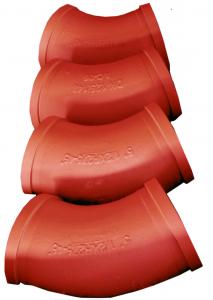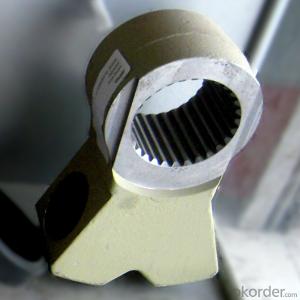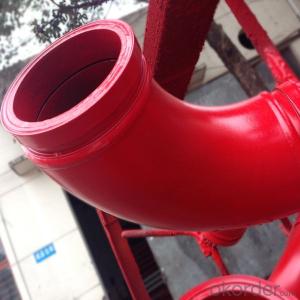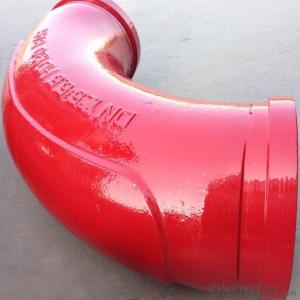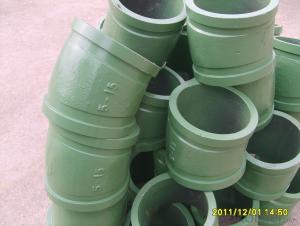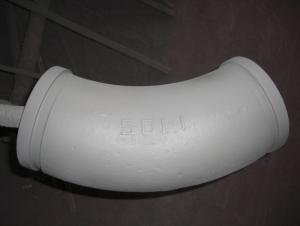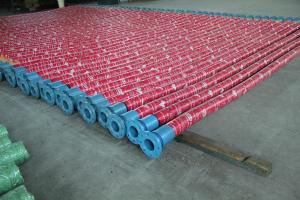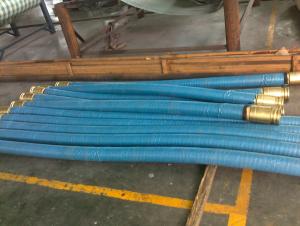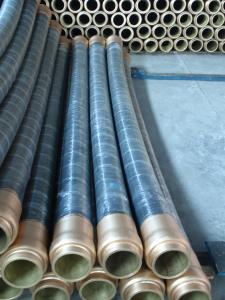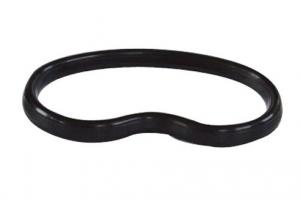Concrete Pump Truck Parts Elbow Bend DN100 R275 90DGR 127MM Mn13-4 Casting
- Loading Port:
- China Main Port
- Payment Terms:
- TT OR LC
- Min Order Qty:
- -
- Supply Capability:
- -
OKorder Service Pledge
Quality Product, Order Online Tracking, Timely Delivery
OKorder Financial Service
Credit Rating, Credit Services, Credit Purchasing
You Might Also Like

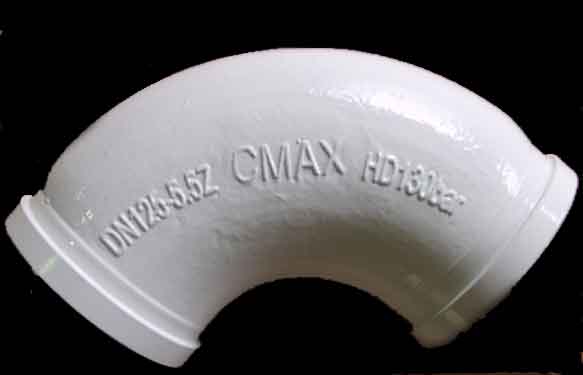
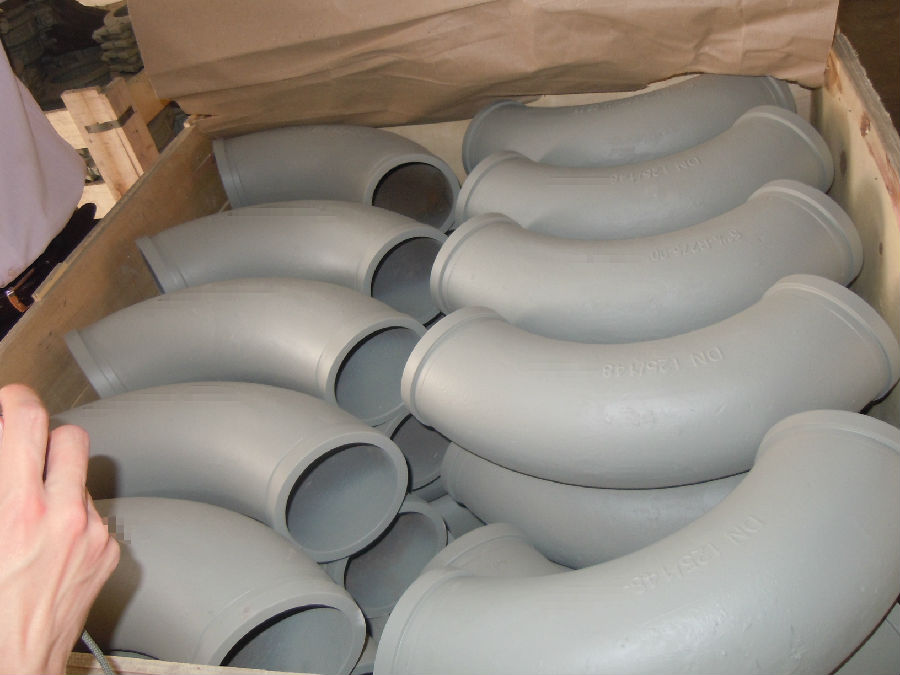
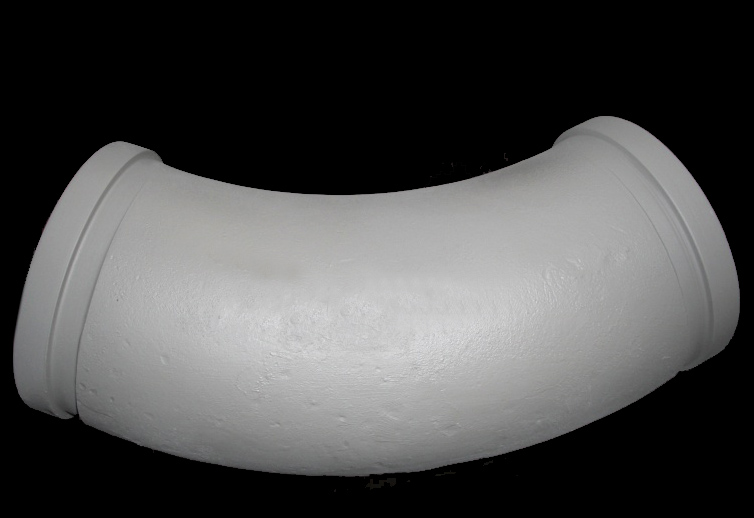
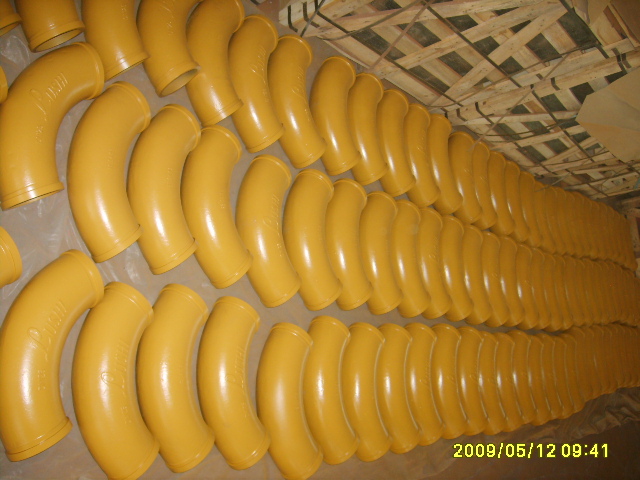
Product Description:
Product Name: Concrete Pump ELBOW DN100
1. Specification of Concrete Pump ELBOW DN100
Dimensions: DN100
Radius: 275mm
Flange: SK, ZX, F&M
Degree: 90
Material: #20 steel, ST52
Thickness: 4.5mm,6mm,7.1mm,7.5mm,10mm,
Working pressure: 180MPa
Notes: total series of concrete pump ELBOW for different brand concrete pump(PUTZMEISTER, SCHWING, CIFA, SANY, ZOOMLION, IHI, KYOKUTO Etc) available from us.
2. Application of Concrete Pump ELBOW DN100
Widely used on concrete pump truck, concrete placing boom, trailer concrete pump etc, for concrete delivery pipe connection.
Our concrete pump bends have been successfully exported to many countries from 1998, Our main markets as below: Middle East, Southeast Asia, America, Brazil, Italy, Russia, South Africa etc
Aiming at the largest concrete pump parts manufacturer, and reliable, professional supplier in China, we can supply concrete pump elbows, delivery pipes, casting or forging couplings, end rubber hoses, rubber pistons, tungsten wear plates, delivery cylinders, and other hydraulic parts, one stop service for your concrete pump parts and accessory business.
3. Package and Delivery of Concrete Pump ELBOW
Every 30pcs put in one seaworthy wooden box, and 20 boxes in one 20feet container.
Product Name: Concrete Pump ELBOW DN100
1. Specification of Concrete Pump ELBOW DN100
Dimensions: DN100
Radius: 275mm
Flange: SK, ZX, F&M
Degree: 90
Material: #20 steel, ST52
Thickness: 4.5mm,6mm,7.1mm,7.5mm,10mm,
Working pressure: 180MPa
Notes: total series of concrete pump ELBOW for different brand concrete pump(PUTZMEISTER, SCHWING, CIFA, SANY, ZOOMLION, IHI, KYOKUTO Etc) available from us.
2. Application of Concrete Pump ELBOW DN100
Widely used on concrete pump truck, concrete placing boom, trailer concrete pump etc, for concrete delivery pipe connection.
Our concrete pump bends have been successfully exported to many countries from 1998, Our main markets as below: Middle East, Southeast Asia, America, Brazil, Italy, Russia, South Africa etc
Aiming at the largest concrete pump parts manufacturer, and reliable, professional supplier in China, we can supply concrete pump elbows, delivery pipes, casting or forging couplings, end rubber hoses, rubber pistons, tungsten wear plates, delivery cylinders, and other hydraulic parts, one stop service for your concrete pump parts and accessory business.
3. Package and Delivery of Concrete Pump ELBOW
Every 30pcs put in one seaworthy wooden box, and 20 boxes in one 20feet container.
- Q: What are the signs of a malfunctioning concrete pump control valve?
- There are several signs that can indicate a malfunctioning concrete pump control valve. Some of the most common signs include: 1. Inconsistent or uneven flow of concrete: A malfunctioning control valve can result in irregular flow of concrete, causing it to be unevenly distributed or even stopping the flow altogether. 2. Pressure fluctuations: If the control valve is not working properly, it can lead to fluctuations in the pressure of the concrete pump. This can cause inconsistent output and potentially damage the pump or other components. 3. Increased noise levels: A malfunctioning control valve may produce unusual or excessive noise during operation. This can be an indication of internal issues or improper functioning of the valve. 4. Leakage or dripping: Another sign of a malfunctioning control valve is the presence of leaks or drips around the valve or its connections. This can indicate seal failure or other problems that need to be addressed. 5. Difficulty in controlling the pump: When the control valve is not functioning correctly, it can become difficult to control the pump's operations. This can include issues with starting or stopping the pump, as well as controlling the speed and direction of the concrete flow. 6. Increased energy consumption: A malfunctioning control valve may result in increased energy consumption as the pump works harder to compensate for the valve's inefficiencies. This can lead to higher operating costs and decreased overall efficiency. If any of these signs are observed, it is important to address the issue promptly. Malfunctioning control valves can lead to costly repairs, downtime, and potential safety hazards. It is recommended to consult a professional technician or service provider to diagnose and resolve the problem.
- Q: How often should concrete pump pressure gauges be inspected and replaced?
- Concrete pump pressure gauges should be inspected and replaced on a regular basis, ideally every six months or as recommended by the manufacturer. Regular inspections help ensure accurate pressure readings and prevent potential accidents or malfunctions due to faulty gauges.
- Q: Can concrete pump spare parts be repaired or refurbished?
- Yes, concrete pump spare parts can be repaired or refurbished. Many common spare parts such as seals, bearings, valves, and hydraulic components can be repaired or refurbished to extend their lifespan and save costs. Repairing or refurbishing these parts can involve replacing worn-out or damaged components, reconditioning or re-machining certain parts, and performing necessary maintenance and testing to ensure their proper functionality. Additionally, some manufacturers or specialized companies may offer services for repairing or refurbishing specific concrete pump spare parts, allowing for a more cost-effective solution compared to purchasing brand new parts. However, it is important to note that not all spare parts can be repaired or refurbished, especially if they are severely damaged or have exceeded their recommended service life. In such cases, it may be more practical and safer to replace the parts with new ones.
- Q: How can a damaged concrete pump hopper affect the pumping process?
- A damaged concrete pump hopper can have several negative impacts on the pumping process. Firstly, a damaged hopper can lead to a decrease in efficiency and productivity. The hopper is responsible for holding and feeding the concrete mixture into the pump, and any damage to it can result in a disruption of the continuous flow of concrete. This can lead to frequent interruptions in the pumping process, causing delays and reducing the overall output of the pump. Secondly, a damaged hopper can affect the quality of the concrete being pumped. The hopper is designed to ensure proper mixing and consistency of the concrete mixture before it is pumped. If the hopper is damaged, it may not be able to effectively mix the concrete, leading to inconsistencies in the mixture. This can result in poor-quality concrete being pumped, which can compromise the structural integrity and durability of the final product. Moreover, a damaged hopper can pose safety risks for the workers involved in the pumping process. A damaged hopper may have sharp edges or loose parts that can cause injury if not properly addressed. Additionally, if the hopper is not functioning properly, it may lead to clogs or blockages in the pump, which can cause pressure build-up and potential accidents. Lastly, a damaged hopper can increase maintenance and repair costs. A hopper that is not in optimal condition may require frequent repairs or even replacement, which can be costly in terms of time and money. Regular maintenance and inspection of the hopper is crucial to identify any damages early on and prevent them from escalating into more significant issues. In conclusion, a damaged concrete pump hopper can significantly affect the pumping process by reducing efficiency, compromising the quality of the concrete, posing safety risks, and increasing maintenance costs. Regular inspection, maintenance, and timely repairs are essential to ensure the smooth operation of the pump and the delivery of high-quality concrete.
- Q: What are the different types of concrete pump hopper agitator blades?
- There are several different types of concrete pump hopper agitator blades that are used in the construction industry. These blades are designed to efficiently mix and agitate the concrete mixture in the hopper, ensuring a consistent and homogeneous mixture before it is pumped onto the project site. 1. Paddle Blades: Paddle blades are the most common type of agitator blades used in concrete pump hoppers. These blades have a flat, paddle-like design that helps to mix the concrete ingredients effectively. They are typically made of high-quality steel or hardened rubber for durability and optimal performance. 2. Helical Blades: Helical blades are spiral-shaped agitator blades that are designed to create a gentle, swirling motion within the hopper. This type of blade is particularly effective in preventing the formation of lumps and ensuring a smooth and well-mixed concrete mixture. 3. Ribbon Blades: Ribbon blades are thin, flat blades that resemble ribbons. They are typically placed vertically in the hopper and rotate along their axis to mix the concrete ingredients thoroughly. Ribbon blades are known for their ability to prevent clogging and improve the overall efficiency of concrete pumping. 4. Fan Blades: Fan blades have a unique fan-shaped design that helps to agitate the concrete mixture by creating a powerful airflow within the hopper. This type of blade is particularly effective in preventing the segregation of concrete ingredients and maintaining a consistent mixture. 5. Tine Blades: Tine blades feature multiple prongs or tines that extend outwards from a central hub. These blades create a more aggressive agitation action, making them suitable for mixing heavier concrete mixes or those that contain large aggregates. The choice of agitator blades depends on various factors, including the type of concrete being used, the desired consistency of the mixture, and the specific requirements of the construction project. It is essential to select the appropriate blade type and ensure regular maintenance to optimize the performance and lifespan of the concrete pump hopper agitator.
- Q: Can concrete pump spare parts be inspected for dimensional accuracy before installation?
- Yes, concrete pump spare parts can be inspected for dimensional accuracy before installation. By conducting a thorough inspection, one can ensure that the spare parts meet the required specifications and will fit properly into the pump system. This pre-installation inspection helps prevent any potential issues or damage during operation, ensuring the efficient and reliable functioning of the concrete pump.
- Q: How often should hydraulic cylinders be inspected or replaced in a concrete pump?
- Hydraulic cylinders in a concrete pump should be inspected regularly, ideally every 500 hours of operation or at least once a year, whichever comes first. However, it is important to note that the frequency of inspections may vary depending on the specific conditions and usage of the concrete pump. During inspections, qualified technicians should thoroughly examine the hydraulic cylinders for any signs of wear, damage, or leaks. They should also check the alignment, piston rods, seals, and other components to ensure proper functioning. If any issues are found, such as excessive wear or leaks, it is recommended to replace the hydraulic cylinders promptly to prevent further damage and maintain optimal performance. Regular inspections and timely replacements of hydraulic cylinders are crucial for ensuring the safety, efficiency, and longevity of a concrete pump. Neglecting proper maintenance can lead to costly repairs, decreased productivity, and even accidents. Therefore, it is essential to follow manufacturer's guidelines and consult with professionals to determine the appropriate inspection and replacement intervals for hydraulic cylinders in a concrete pump.
- Q: What are the advantages of using genuine spare parts for my concrete pump?
- There are several advantages to using genuine spare parts for your concrete pump. Firstly, genuine parts are specifically designed and manufactured to fit and function perfectly with your pump, ensuring optimal performance and reliability. These parts are made with high-quality materials and undergo rigorous testing, providing durability and longevity. Secondly, using genuine spare parts helps to maintain the integrity and efficiency of your concrete pump. Non-genuine parts may not meet the same standards, leading to decreased performance, increased downtime, and potentially costly repairs. Genuine parts also come with warranties, providing peace of mind and assurance of their quality. Moreover, using genuine spare parts ensures compatibility with the rest of your equipment and reduces the risk of damage or malfunction. Mixing non-genuine parts with genuine ones can lead to mechanical issues, which can be avoided by sticking to genuine replacements. Lastly, using genuine spare parts helps to retain the value of your concrete pump. When it comes to selling or trading in your equipment, having genuine parts installed increases its market value, as it indicates that the pump has been properly maintained and cared for. Overall, investing in genuine spare parts for your concrete pump guarantees superior performance, longevity, compatibility, and value, making it a wise and cost-effective choice in the long run.
- Q: Can concrete pump spare parts be repaired on-site, or should they be sent to a specialized repair facility?
- In certain cases, it is possible to repair concrete pump spare parts on-site, while in others, it may be necessary to send them to a specialized repair facility. The choice between on-site repair or specialized repair depends on factors such as the nature and complexity of the repair required, the availability of skilled technicians and equipment, and the time constraints of the project. For minor repairs or replacements of simple components, it is often feasible to carry out the work on-site. This can include tasks like replacing hoses, seals, or filters, which can be completed quickly and easily with basic tools and equipment. Operators or maintenance personnel can often handle these types of repairs themselves, without the need for specialized technicians. However, for more complicated repairs or replacements, it is advisable to send the spare parts to a specialized repair facility. This is especially true for critical components such as hydraulic cylinders, valves, or control systems, which require specialized knowledge and expertise to repair effectively. Specialized repair facilities employ trained technicians who specialize in specific equipment and have the necessary tools and resources to diagnose and resolve complex issues. Furthermore, specialized repair facilities often have access to a broader range of spare parts and can obtain genuine parts from the original manufacturer. This ensures that the repaired spare parts are of high quality and compatible with the specific make and model of the concrete pump. Additionally, these facilities may offer warranties on their repairs, providing reassurance to equipment owners. Ultimately, the decision to repair on-site or send for specialized repair depends on the unique circumstances and available resources. It is crucial to evaluate the complexity of the repair, the availability of skilled technicians, and the potential impact on the project timeline before determining the most appropriate course of action.
- Q: What are the signs of a worn-out concrete pump piston?
- There are multiple indicators that can suggest a worn-out concrete pump piston. Initially, a decrease in output or performance may signify this issue. Reduced pumping pressure or slower pumping speed can be observed as a result of this decline in performance. Another indication of a worn-out piston in a concrete pump is increased leakage. If you notice an excessive amount of hydraulic oil or water leaking from the pump, it could be an indication that the piston is no longer effectively sealing. This leakage can also lead to contamination of the hydraulic fluid, which can cause additional harm to the pump components. Furthermore, an irregular concrete flow can be caused by a worn-out piston. If you notice inconsistent and uneven delivery of concrete, such as pulsating or surging flow, it may be due to an uneven wear pattern on the piston. This can have a detrimental effect on the quality of the concrete and the overall efficiency of the pumping operation. Additionally, excessive vibration and noise during the pumping process can also suggest a worn-out piston. Vibrations may occur as a result of the piston not moving smoothly within the cylinder, leading to friction and noise. These vibrations and noises can also indicate other underlying problems with the pump, so it is important to address them promptly. Finally, a visual inspection can provide valuable information regarding the condition of the concrete pump piston. Physical damage, such as cracks or excessive wear on the piston surface, are clear indications of a worn-out piston. These damages can be caused by abrasive materials or harsh operating conditions. In conclusion, if you observe any of these signs or suspect that your concrete pump piston is worn-out, it is crucial to have it inspected and replaced by a professional. Timely maintenance and replacement of worn-out pistons can prevent further damage to the pump and ensure a smooth and efficient operation.
Send your message to us
Concrete Pump Truck Parts Elbow Bend DN100 R275 90DGR 127MM Mn13-4 Casting
- Loading Port:
- China Main Port
- Payment Terms:
- TT OR LC
- Min Order Qty:
- -
- Supply Capability:
- -
OKorder Service Pledge
Quality Product, Order Online Tracking, Timely Delivery
OKorder Financial Service
Credit Rating, Credit Services, Credit Purchasing
Similar products
Hot products
Hot Searches
Related keywords
